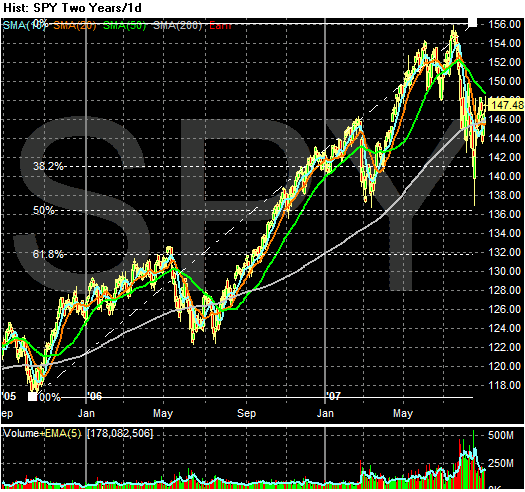It is not the responsibility of the Federal Reserve--nor would it be appropriate--to protect lenders and investors from the consequences of their financial decisions. But developments in financial markets can have broad economic effects felt by many outside the markets, and the Federal Reserve must take those effects into account when determining policy. In a statement issued simultaneously with the discount window announcement, the FOMC indicated that the deterioration in financial market conditions and the tightening of credit since its August 7 meeting had appreciably increased the downside risks to growth. In particular, the further tightening of credit conditions, if sustained, would increase the risk that the current weakness in housing could be deeper or more prolonged than previously expected, with possible adverse effects on consumer spending and the economy more generally.
I should add at this point that I am a lawyer by training, so I have a tendency (perhaps an annoying tendency) to over-analyze written statements. Hey -- that's what I get paid to do.
Anyway.....
Here's the short version: the Fed won't bail out lenders who made bad loans, but will lower rates if the current credit market problems start to slow down economic growth.
Let me play out a few scenarios that have been running through my head the past few days.
1.) Friday's employment report stinks. The market would interpret this as a sign the economy is slowing and the Fed would lower rates. Therefore, the market rallies.
2.) Friday's employment report is strong. The market would interpret this as a sign the economy is doing well; the credit market problems are contained. The markets rally.
3.) Tuesday's construction report is weak. The market would interpret this as a sign the economy is slowing and the Fed would lower rates. The market rallies.
4.) Tuesday's construction report is strong. The market would interpret this as a sign the economy is doing well; the credit market problems are contained. The markets rally.
5.) Let's say a slew of hedge funds report they have massive losses. The market would probably interpret this as a reason to rally because the cumulative damage to the markets would slow the economy.
Do you see where I am going with this? No matter what happens the lens through which market participants view the market would see a reason to rally.
Now, remember below when I was looking at the market I advanced the idea that the SPYs are currently forming a reverse head and shoulders pattern? This is typically a bottoming formation -- something that happens at a market bottom. Assuming the above analysis to be correct then we could start to see the SPYs rally from here.
Also, here are four more charts of the SPY. The first two use Fibonacci fans and the second two use Fibonacci retracements. Notice that with all of these charts the market is at a technically important Fibonacci level. That means the probability of something happening is higher to traders who use Fibonacci analysis.




As with all technical analysis, remember this caveat: the markets have many tools to make an ass out of you, and will use those tools to your disadvantage at all possible times.